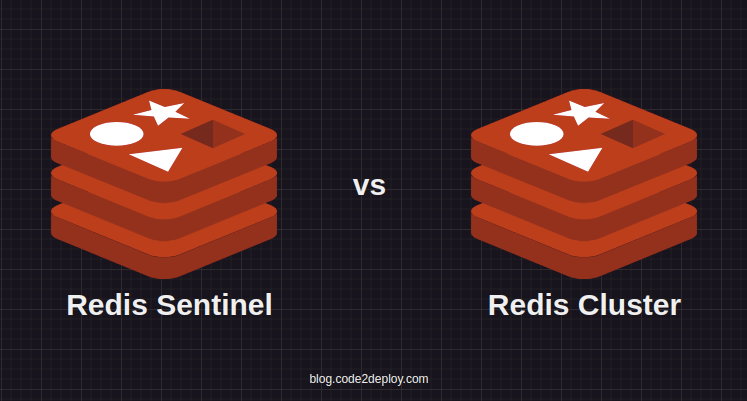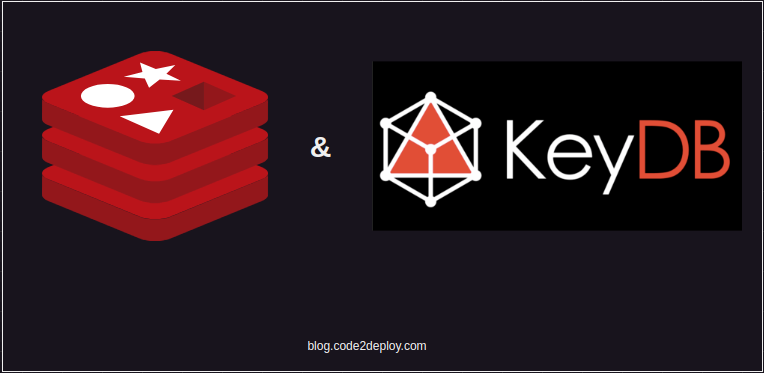Redis Sentinel and Redis Cluster are two prominent deployment strategies offered by Redis for achieving high availability, fault tolerance, and scalability. In this comprehensive comparison, we’ll explore the differences, benefits, use cases, and considerations of Redis Sentinel and Redis Cluster, helping you choose the best deployment strategy for your Redis infrastructure.
Redis Sentinel:
Redis Sentinel is a distributed system designed to monitor and manage individual Redis instances, providing automatic failover, master discovery, and high availability. Let’s delve into the key aspects of Redis Sentinel:
Purpose:
- High Availability: Redis Sentinel ensures Redis instances remain available even in the event of node failures, minimizing downtime and ensuring uninterrupted service availability.
- Automatic Failover: Sentinel automatically promotes a replica to master when the current master node fails, ensuring continuous operation without manual intervention.
- Master Discovery: Sentinel performs dynamic master discovery, allowing clients to connect to the current master node dynamically without the need for static configurations.
Use Cases:
- Mission-Critical Applications: Ideal for applications requiring high availability and fault tolerance, such as e-commerce platforms, financial systems, and real-time messaging applications.
- Automated Failover: Suited for applications where automated failover is crucial to minimize service disruptions and ensure continuous operation without human intervention.
- Dynamic Environments: Well-suited for environments with dynamic IP addresses or cloud deployments, where static configurations are impractical.
Best for:
- Ensuring High Availability: Redis Sentinel excels in providing high availability and fault tolerance for individual Redis instances, making it suitable for applications where downtime is not acceptable.
Redis Cluster:
Redis Cluster is a distributed implementation of Redis designed to provide linear scalability and high availability through partitioning and replication. Let’s explore the key aspects of Redis Cluster:
Purpose:
- Scalability: Redis Cluster enables horizontal scaling beyond the capacity of a single Redis instance by distributing data across multiple nodes and allowing for linear scaling with the addition of nodes.
- Fault Tolerance: Redis Cluster ensures fault tolerance and data redundancy through data partitioning and replication, minimizing the risk of data loss and ensuring continuous operation in the event of node failures.
- Automatic Rebalancing: Redis Cluster automatically rebalances data among nodes when nodes join or leave the cluster, ensuring even distribution and optimal performance.
Use Cases:
- Large-Scale Deployments: Ideal for applications requiring massive scalability and high performance, such as real-time analytics platforms, high-traffic web applications, and IoT data processing systems.
- Data-Intensive Workloads: Suited for handling data-intensive workloads with ease, leveraging Redis Cluster’s distributed architecture and fault-tolerant design.
- High-Performance Applications: Well-suited for applications demanding high performance, low latency, and fault tolerance, where Redis Cluster’s distributed nature ensures optimal performance and reliability.
Best for:
- Scaling Redis Deployments: Redis Cluster is best suited for scaling Redis deployments horizontally, accommodating growing datasets and workloads with ease.
Comparison:
High Availability:
- Redis Sentinel: Ensures high availability and fault tolerance for individual Redis instances through automatic failover and master discovery.
- Redis Cluster: Provides high availability and fault tolerance through data partitioning and replication across multiple Redis nodes, ensuring continuous operation even in the event of node failures.
Scalability:
- Redis Sentinel: Does not offer inherent scalability beyond individual Redis instances; scaling is achieved by adding more Redis Sentinel nodes for monitoring.
- Redis Cluster: Enables horizontal scaling by distributing data across multiple nodes and allowing for linear scaling with the addition of nodes, accommodating growing datasets and workloads.
Use Cases:
- Redis Sentinel: Best suited for applications requiring high availability, fault tolerance, and automated failover for individual Redis instances.
- Redis Cluster: Ideal for large-scale deployments demanding massive scalability, high performance, and fault tolerance, where data partitioning and replication ensure optimal operation.
Automation:
- Redis Sentinel: Offers automated failover for individual Redis instances, minimizing downtime and ensuring continuous operation without manual intervention.
- Redis Cluster: Automates data rebalancing, failover, and replication, ensuring optimal performance and reliability without the need for manual intervention.
Let’s outline the key features of both Redis Sentinel and Redis Cluster:
| Features | Redis Sentinel | Redis Cluster | Comments |
| Multiple Logical Databases | Yes | No | Redis Standard with sentinel can offer 16 databases |
| Strong Consistency | No | No | Both have a short interval where writes can be lost |
| Horizontal Scaling | No | Yes | Up to 10000 nodes, it scales linearly |
| Replication | Yes | Yes | Both async |
| Sharding Capabilities | No | Yes | Using hash slots |
| Failover | Yes | Yes | Depending on the replica setup |
| Notification API | Yes | No | Sentinel offers an API to system admins |
| Multi-Key operations | Yes | No | For the Redis cluster, only if all keys belong to the same node. |
| Use replica to scale reads | Yes | Yes | Both are same |
| Publish/Subscribe | Yes | Yes | Redis cluster has some extra capabilities. |
Conclusion:
Choosing between Redis Sentinel and Redis Cluster depends on your application’s requirements for high availability, scalability, fault tolerance, and automation.
- Redis Sentinel is best suited for ensuring high availability and fault tolerance for individual Redis instances, making it ideal for mission-critical applications requiring automated failover and master discovery.
- Redis Cluster excels in providing linear scalability and high availability for large-scale deployments, making it ideal for applications demanding massive scalability, high performance, and fault tolerance.
Evaluate your application’s needs, scalability requirements, and operational preferences to determine the best deployment strategy for your Redis infrastructure. Both Redis Sentinel and Redis Cluster offer robust solutions for achieving high availability, fault tolerance, and scalability, ensuring optimal performance and reliability for your applications.


